Page 3 of 3
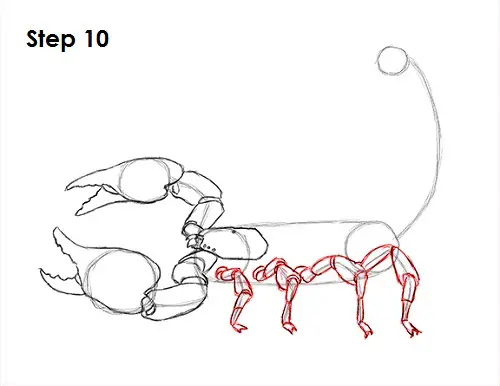
Step 10: Use the lines at the bottom as guides to draw the scorpion's legs. Just like with the pedipalps, follow the path of the line as you draw the separate segments that create each leg. Each leg should have about four segments each. They should also get bigger the farther back toward the tail they are. The legs should be attached to the cephalothorax, but for the sake of simplicity and to prevent too much overlap, you can add them across the bottom along the scorpion's abdomen. The joints where each segment is attached should be thinner. Each individual segment should also vary in width.

Step 11: Use the initial shapes as guides to draw the back portion of the body or the abdomen. Add a few bumps to the abdomen as you follow the path of the guides and darken the lines. Draw a few curved lines inside the shape to indicate the separate segments within the scorpion's abdomen. There should be about seven segments. Now darken the lines at the bottom in between the legs to finish up the scorpion's abdomen.
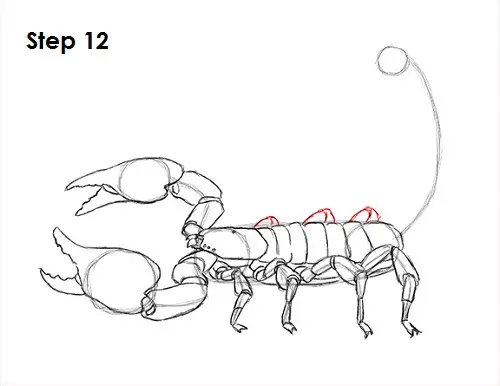
Step 12: Draw a few bumps on top of the abdomen to indicate the legs on the other side. Only draw the tips, as most of the legs are hidden behind the scorpion's body.
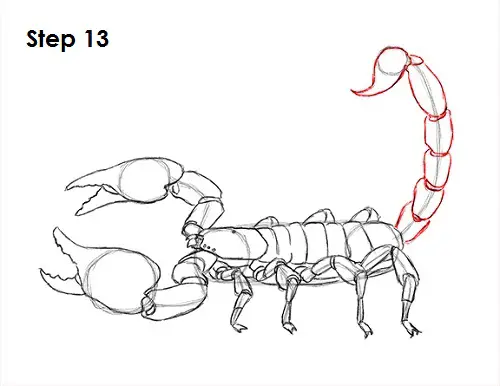
Step 13: Use the curved line and circle on the right as guides to draw the scorpion's tail and sting. Darken the shape of the circle but add a curved, pointy spike-like shape on the left side for the actual sting. Follow the path of the line as you draw the individual segments that make up the tail. There should be five segments of different sizes under the sting. Different species of scorpions have different-sized stings and tails, so draw yours as big or small as you'd like.
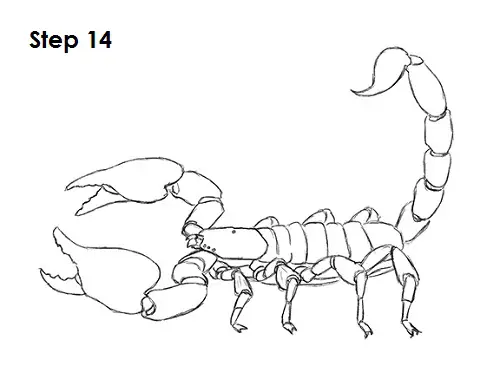
Step 14 (optional): For a cleaner look, erase as much as you can of the initial lines. Don't worry about erasing all of the guides. It's okay to leave some behind. Also re-draw any final sketch lines that you may have accidentally erased.
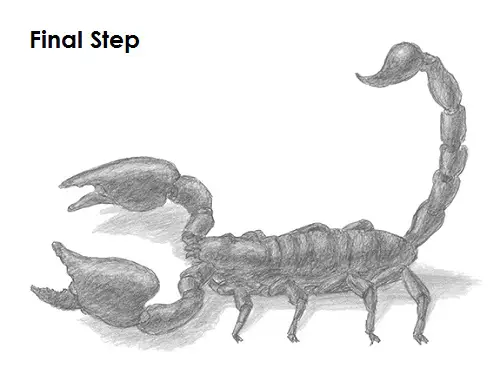
Final Step (optional): Add some shading to your scorpion drawing to give it more dimension and volume. Pick the direction of the light source when shading so that the shadows are consistent with it. Don't worry too much about the shading if you're going to add more value to scorpion drawing later.
Add a cast shadow underneath. This helps ground the scorpion so it doesn't appear to be floating.
You can add more value throughout your scorpion drawing for extra detail. Vary the pressure on your pencil to get different degrees of tonal value. Scorpions have hard exoskeletons that can be very shiny, so use a lighter value on part of each segment for a shinier look. Add the value using even, smooth strokes for a sleek, shiny look instead of a rough, gritty texture. Adding value to each tiny, individual segment can be very time-consuming, so be patient and take plenty of breaks. Some species of scorpions are very light in color, so you can make your scorpion lighter for a faster process. Some people keep scorpions as pets. If you have a pet scorpion, try to duplicate its look on your drawing. You can also get creative and add the value however you'd like. You can use spots, stripes and even different colors! If you want a more accurate scorpion drawing, it's a good idea to use reference, especially if you're drawing a specific species of scorpion. Pause the "How to Draw a Scorpion" video to use this drawing as reference and draw at your own pace.
Thanks for watching! Subscribe to the
How2DrawAnimals YouTube Channel for a new tutorial every Tuesday.
To learn how to draw popular cartoon characters, visit
EasyDrawingTutorials.com.













